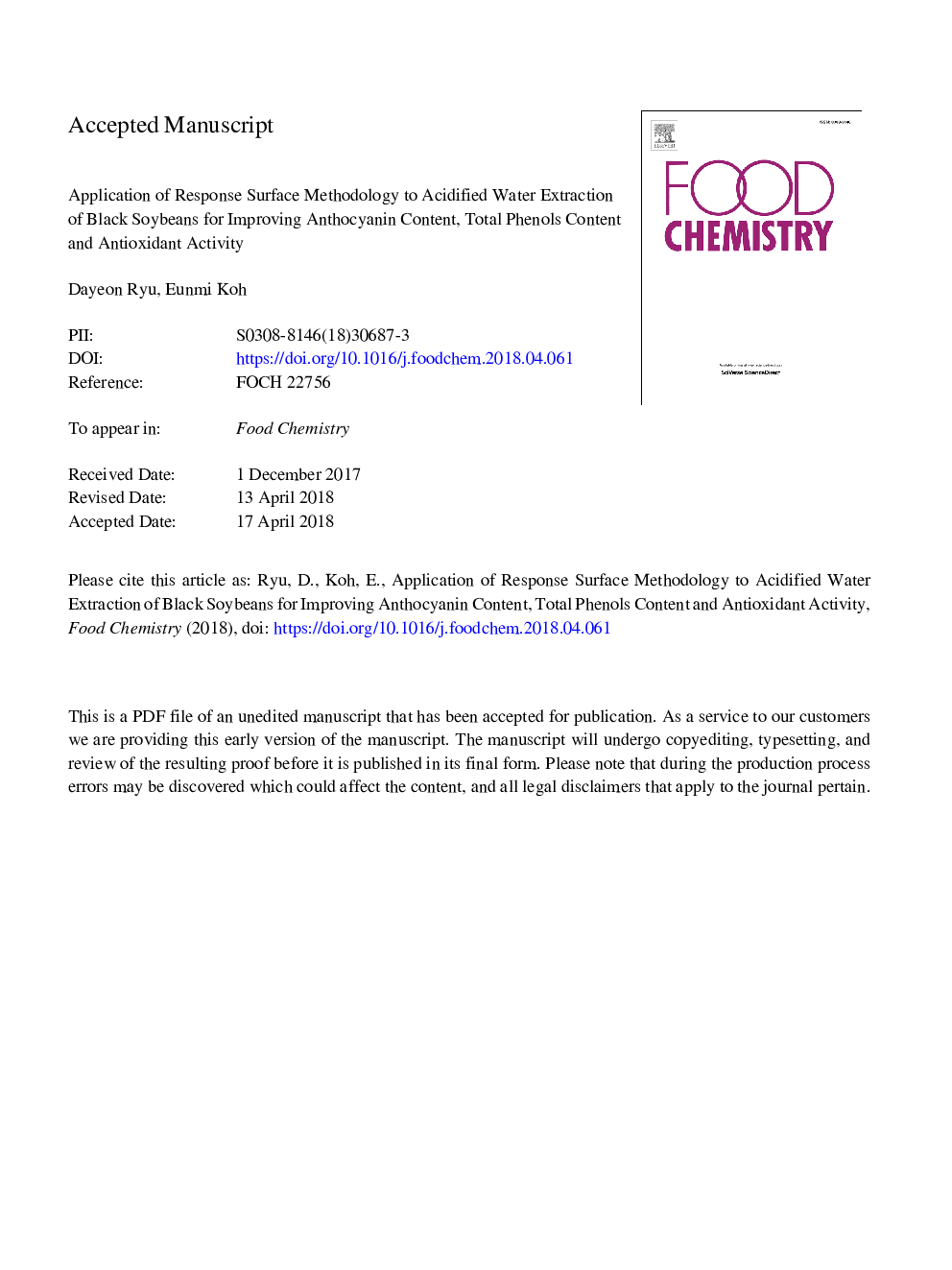| Article ID | Journal | Published Year | Pages | File Type |
|---|---|---|---|---|
| 7584927 | Food Chemistry | 2018 | 31 Pages |
Abstract
Acidified water extraction of total anthocyanin content, total phenol content and 2,2â²-azino-bis (3-ethylbenzothiazoline-6-sulfonic acid) (ABTS) scavenging activity from black soybeans (Glycine max [L.] Merr. Cheongja4ho) was optimized using response surface methodology (RSM). A five-level, three-factor central composite design was employed to optimize the conditions for the maximum yields of these three components using19 different experiments. The HCl concentration (0.3-0.5%), solid-liquid ratio (1/30-1/50â¯g/mL) and extraction temperature (30-50â¯Â°C) significantly affected three components. The optimized conditions were HCl concentration of 0.359%, solid-liquid ratio of 1/54.2â¯g/mL and extraction temperature of 56.8â¯Â°C for total anthocyanin content (136.68â¯mg/100â¯g), total phenol content (1197.09â¯mg/100â¯g) and ABTS+ scavenging activity (211.65â¯mg/100â¯g). These experimental values fit well with the predicted values. Among three anthocyanins found in the black soybean extracts, cyanidin-3-O-glucoside was the major one (65-73% of the total), followed by petunidin-3-O-glucoside (17-23%) and delphinidin-3-O-glucoside (10-12%).
Keywords
Related Topics
Physical Sciences and Engineering
Chemistry
Analytical Chemistry
Authors
Dayeon Ryu, Eunmi Koh,
